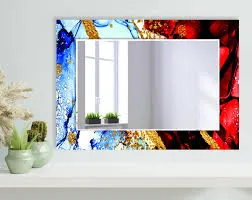

The Allure of Silver Carved Mirrors An Artistic Reflection
Mirrors have long been revered not merely for their utility in reflecting our physical appearances but also for their ability to enhance interiors, create illusions of space, and add an undeniable artistic touch to any environment. Among the myriad of mirror designs available, silver carved mirrors stand out as a timeless, elegant option that combines functionality with intricate craftsmanship.
Historical Background
The art of mirror-making dates back to ancient civilizations. However, the allure of silver mirrors particularly gained momentum during the Renaissance period when artists began to experiment more earnestly with shapes, materials, and techniques. Silver itself has been admired for its lustrous quality and durability, making it an ideal choice for decorative items. Silver carved mirrors not only served as functional objects but also as status symbols, showcasing wealth and taste. Their ornate designs often reflected the opulence of the era they were created in, blending artistic expression with everyday utility.
Craftsmanship and Design
Creating a silver carved mirror is not simply a matter of assembling materials; it is an intricate process that combines artistry and skill. Artisans often begin with a base of high-quality glass, which is carefully chosen for its clarity and reflectiveness. The silver backing is then applied, followed by detailed carving to achieve exquisite patterns, shapes, and decorations.
Common motifs used in silver carving include floral designs, geometric shapes, and baroque influences, each adding a layer of depth and character to the mirror. The depth of the carving enhances the play of light and shadow across the surface, creating a dynamic visual experience. The final result is not just a mirror, but a piece of art that can transform a room.
Versatility in Décor

One of the greatest advantages of a silver carved mirror is its versatility. Such mirrors can complement various interior design styles, from traditional to modern. In a classic setting, they can provide an air of sophistication and grandeur, while in contemporary spaces, they serve as striking focal points that add both elegance and drama.
Moreover, silver carved mirrors can be used in a multitude of ways. Hanging one above a mantelpiece, as part of a gallery wall, or in an entryway can instantly elevate the aesthetic appeal of a space. Additionally, they can be utilized to make small rooms feel larger by reflecting light and creating a sense of depth.
The Emotional Connection
Beyond their aesthetic appeal, silver carved mirrors often hold sentimental value. They can be family heirlooms passed down through generations, embodying memories and stories. The act of looking into a mirror can evoke a sense of self-awareness, prompting reflection not solely in the physical sense but also in terms of personal growth and history.
In today's fast-paced world, a silver carved mirror can serve as a moment of pause, encouraging individuals to take a moment for introspection amid their busy lives. Its beauty acts as a reminder of the importance of self-reflection and the intricate tapestry of one's life experiences.
Conclusion
In conclusion, silver carved mirrors are much more than mere reflective surfaces; they are exquisite pieces of art that embody history, craftsmanship, and emotional resonance. Their ability to enhance interiors, capture light, and evoke personal connections sets them apart in the realm of home décor. Whether as a statement piece in a living room or a cherished family heirloom, the allure of silver carved mirrors continues to endure, making them a beloved choice for those who appreciate beauty and artistry in their daily lives. As we look into them, we not only see our reflections but also a reflection of artistry that transcends time.